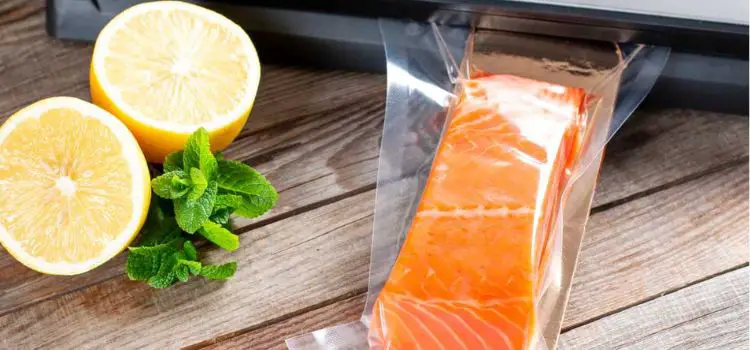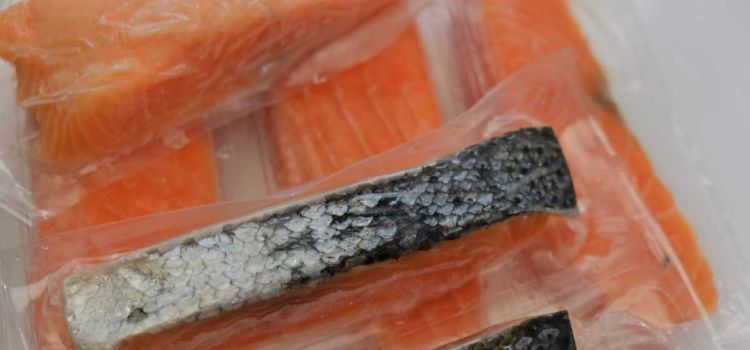As an Amazon Associate, I earn from qualifying purchases

Vacuum sealing has become a game-changer in the world of food preservation, especially when it comes to storing fish. This method not only extends the shelf life of fish but also locks in its freshness and flavor, making it a favorite among home cooks and professional chefs alike. By removing air from the packaging, vacuum sealing prevents oxidation and bacterial growth, which are the primary culprits of spoilage. Whether you’re an avid fisherman with a fresh catch or someone who loves buying fish in bulk, vacuum sealing can help you enjoy your fish at its best for longer periods.
Fish, with its delicate texture and rich flavors, benefits immensely from vacuum sealing. This technique ensures that the fish remains as fresh as the day it was sealed, preserving its taste and nutritional value. In this article, we’ll explore the necessary equipment, provide a step-by-step guide to vacuum sealing fish, share tips for maintaining freshness, and highlight common mistakes to avoid.
Necessary Equipment and Materials
Before you start vacuum sealing fish, it’s essential to gather the right equipment and materials. Here’s what you’ll need:
- Vacuum Sealer Machine: This is the heart of the operation. Vacuum sealers come in various models, from basic handheld devices to more advanced countertop machines. Choose one that suits your needs and budget. Look for features like adjustable suction levels and sealing modes, which can be particularly useful for delicate items like fish.
- Vacuum Seal Bags: Not all bags are created equal. For fish, it’s crucial to use high-quality, BPA-free vacuum seal bags that are designed to withstand freezing temperatures. These bags come in different sizes, so select the appropriate size based on the portions you plan to seal.
- Additional Tools and Materials: A few other items can make the process smoother. Consider having a pair of kitchen scissors for cutting bags, a permanent marker for labeling, and a clean workspace to prepare the fish.
Step-by-Step Guide to Vacuum Sealing Fish
Now that you have your equipment ready, let’s walk through the process of vacuum sealing fish:
- Preparing the Fish for Sealing: Start by cleaning the fish thoroughly. Remove any scales, bones, and entrails, and rinse it under cold water. Pat the fish dry with paper towels to remove excess moisture, which can interfere with the sealing process. Portion the fish according to your needs, whether it’s fillets, steaks, or whole fish.
- Placing Fish in Vacuum Seal Bags: Once the fish is prepared, place it in the vacuum seal bag. Ensure there’s enough space at the top of the bag for sealing. If you’re sealing multiple pieces, arrange them in a single layer to ensure even sealing and freezing.
- Operating the Vacuum Sealer: Follow the manufacturer’s instructions for your specific vacuum sealer model. Generally, you’ll place the open end of the bag into the sealer, close the lid, and select the appropriate settings. For fish, a gentle suction setting is recommended to avoid crushing the delicate flesh.
- Sealing and Storing the Fish: Once the air is removed, the machine will seal the bag. Check the seal to ensure it’s airtight. If you’re planning to freeze the fish, do so immediately after sealing to lock in freshness.
Tips for Ensuring Freshness and Quality

To get the most out of your vacuum-sealed fish, consider these tips:
- Choosing the Freshest Fish: The quality of the fish before sealing directly impacts its shelf life. Always select the freshest fish available, and seal it as soon as possible to preserve its quality.
- Best Practices for Freezing: If you’re freezing vacuum-sealed fish, set your freezer to the coldest setting to prevent ice crystals from forming. This helps maintain the fish’s texture and flavor.
- Labeling and Dating: Always label your vacuum-sealed packages with the type of fish and the date of sealing. This practice helps with inventory management and ensures you consume the oldest fish first.
Common Mistakes to Avoid
Even with the best intentions, mistakes can happen. Here are some common pitfalls to watch out for:
- Overfilling Bags: Avoid overfilling the bags, as this can prevent a proper seal. Leave enough space at the top of the bag for the sealer to work effectively.
- Not Inspecting Seal Integrity: After sealing, always check the integrity of the seal. A compromised seal can lead to air exposure and spoilage.
- Ignoring Temperature Guidelines: Proper storage temperatures are crucial for maintaining fish quality. Ensure your fridge and freezer are set to the recommended temperatures to prevent spoilage.
Conclusion
Vacuum sealing is an excellent method for preserving the freshness and quality of fish. By following the steps outlined in this article and avoiding common mistakes, you can enjoy delicious, high-quality fish long after it’s been caught or purchased. Whether you’re storing fish for a weeknight dinner or saving a special catch for later, vacuum sealing ensures that your fish remains as fresh and flavorful as the day it was sealed.
In summary, vacuum sealing is a valuable technique for anyone who loves fish. With the right equipment, proper preparation, and attention to detail, you can extend the shelf life of your fish and savor its taste whenever you desire. Happy sealing!
FAQ
How do you prepare fish for vacuum sealing?
To prepare fish for vacuum sealing, clean it thoroughly by removing scales, bones, and entrails. Rinse under cold water and pat dry with paper towels to eliminate excess moisture. Portion the fish appropriately, ensuring it’s ready for immediate cooking or freezing after sealing for optimal freshness.
Do you vacuum seal fish wet or dry?
Fish should be as dry as possible before vacuum sealing. Patting the fish dry with paper towels removes excess moisture, which can interfere with the sealing process and lead to freezer burn. A dry surface ensures a tighter seal and better preservation of the fish’s quality.
Does vacuum sealing preserve fish?
Yes, vacuum sealing effectively preserves fish by removing air, which slows down oxidation and bacterial growth. This method extends the fish’s shelf life, maintains its freshness, flavor, and nutritional value, and prevents freezer burn when stored properly in the fridge or freezer.
As an Amazon Associate, I earn from qualifying purchases